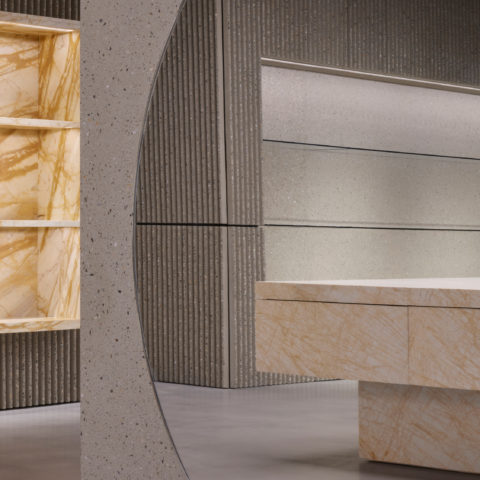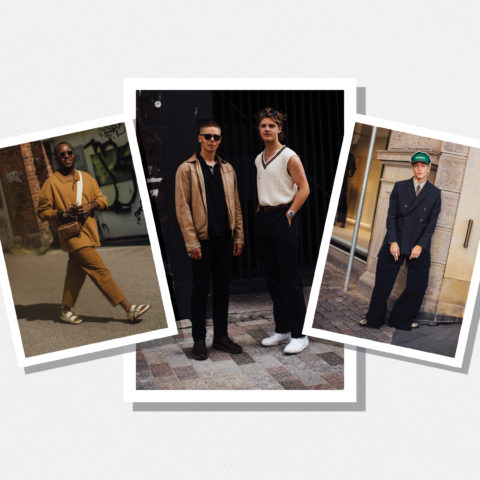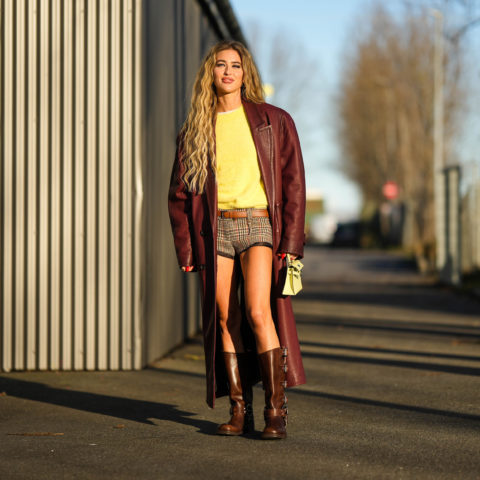Meet the woman making wearable technology more fashion forward than ever

Billie Whitehouse’s Instagram is filled with pictures of her photogenically swimming in the ocean, posing against dramatic city skylines and enjoying herself at music festivals. But her aspirational life is not one of an “Instagram model,” in the vein of Essena O’Neil. Instead, she’s the CEO of her own startup, Wearable Experiments, and a trailblazer in the world of wearable tech. Business Insider has called her the “Elon Musk of Fashion,” and she’s transforming the way wearable tech interacts with fashion.
The coiffed blonde hails from Sydney, Australia where her mom runs the Whitehouse Institute of Design, a fashion school that hosts Australia’s version of Project Runway. She’s been in and around the fashion industry her whole life (Whitehouse jokes about being carried down the catwalk as a baby) and has worked in many aspects of the biz, from styling to creative direction.
Now at 28, she’s conquering the tech world with her fascinating wearable creations. Among her inventions are a jacket that helps you navigate your way around a city, underwear with sensors that allows a partner to touch you remotely, and an athletic jersey you can wear to physically feel what rugby players experience during a game, impacts and all.
Despite the stratospheric hype surrounding wearable tech—Forbes dubbed 2014 the “Year of the Wearable”; the Globe and Mail did the same of 2015—its appeal has been difficult to translate from excitable thinkpieces and Kickstarter campaigns into real life. Motherboard referred to most wearables as “flashing Christmas lights attached to bodysuits,” and we’ve yet to see any wearable tech product successfully make the jump from techbro wet dream to a staple in every fashionista’s closet.
But Billie Whitehouse is as close as anyone has come to finding the silver bullet.
Whitehouse calls her approach “human-centered design,” which means that every product she designs is meant to enhance the characteristics that make us truly human, traits like intimacy, self-awareness, consciousness. Wearable Experiments bills itself as a “socially driven” wearable technology company that uses “creative problem solving to help us live well and have a better quality of life.”
It’s this social aspect of her work that might be the key to a wearables breakthrough. Some of the most popular examples of wearable tech—the Muse headband which helps train your brain to relax, and the Fitbit which monitors your fitness level—are all meant to be used individually. But Whitehouse’s tech is all about bringing us together. “It has a lot to do with human connection,” she tells me over the phone from New York City.
The tech innovations that tend to explode—think Facebook, Twitter, Tinder—are all based on people connecting with each other. If it isn’t social, it isn’t successful. A recent survey by Pew Research Center found that 86% of Internet users in developing countries use their connection as a way to stay in touch with friends. The connecting power of tech is huge, but it hasn’t yet been explored as an avenue in wearables until now.
“It’s not tech for the sake of tech,” she says. “For me, style is everything. I won’t wear it if it doesn’t look or feel good.” Whitehouse designs for style first, and later ensures that the design can support all the capabilities necessary to create the wearable tech product. She suggests that the best wearable tech doesn’t look like wearable tech at all. Instead of trumpeting its own existence, wearable tech should sit invisibly, remaining undetected while it quietly serves its purpose.
Whitehouse explains that she came up with the idea for the Navigate jacket because she had “quite literally watched hundreds of people nearly get hit by taxis, fall off sidewalks and walk into each other” because they weren’t looking where they were going. “Especially if you’re a tourist, you want to engage with what’s around you. But [with smartphones] people are consumed by this continuous stream of information, and they find it hard to let go of that. This is why we built the Navigate jacket. To give them their eyes back in a city they’ve never seen before.”
That said, we’re probably not going to be seeing the jacket in stores any time soon. Wearable Experiments has pushed the pause button on getting the Navigate jacket onto the market because the brand they were collaborating with didn’t think the consumer was ready for such a product. “We could build it tomorrow,” says Whitehouse. “But if we’re building this with someone else, it depends on their timeline.”
“The truth is, this jacket doesn’t belong in a traditional retailer, on a rack next to other jackets. It needs the magic. And that’s not going to be done with a three minute video online either,” she says.
Whitehouse is tight-lipped about exactly what sort of magic is needed to sell wearable tech garments, but understandably so; a magician never reveals their tricks. “It’s not this Minority Report future where everything is just advertising,” she says. Ultimately, the entire retail experience should trigger all five senses in a way that stimulates the consumer into thinking differently about design. “You need to activate someone to think, ‘Wow this piece of clothing does so much more for me than any other piece of clothing I’ve ever seen before.’”
Whitehouse herself is both a creator and a disciple of wearable tech: she wears the Altruis every day, an elegant smart ring by Kovert Designs that triggers a small buzz every time you receive a call, e-mail or text from a preferred contact. She prefers her vintage 1960s Georg Jensen timepiece to the Apple Watch but describes herself as a huge fan of the technology. “I feel extremely excited that they claimed things like intimacy and three million people now understand what haptic feedback is as a mode of communication. It’s validated every life choice I’ve made up until now. ” (If you didn’t know, haptic refers to the tiny vibrations that ping you every time you receive a message or text. Don’t worry, I had to ask too.)
We may not know what’s coming next in the wild world of wearables or when it might becoming, but there’s no doubt that Billie Whitehouse is leading the charge. I’m personally hoping for a pair of pants that can actually make me taller, a stain-proof white shirt, or a fabric that magically repels cat hair. A girl can dream.







